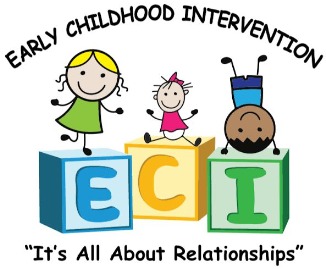
Early Childhood Intervention
The mission of early childhood intervention is to assure that families who have at-risk children in this age range receive resources and supports that assist them in maximizing their child's physical, cognitive, and social/emotional development while respecting the diversity of families and communities.[2]
Early intervention services delivered within the context of the family can aid with the below through the services of physical, occupational, and speech therapy. Some examples include:
Help prevent child abuse and neglect
Mitigate the effects of abuse and neglect
Improve parenting skills
Strengthen families
Improve the child's developmental, social, and educational gains;
Reduce the future costs of special education, rehabilitation and health care needs;
Reduce feelings of isolation, stress and frustration that families may experience;
Help alleviate and reduce behaviors by using positive behavior strategies and interventions; and
Help children with disabilities grow up to become successful, independent individuals.
Assistance with technological devices, counseling, and family training.
The following is a list of what early intervention can provide:
Audiology – identifying and providing services for children with hearing loss and prevention of hearing loss
Family training – services provided by qualified personnel to assist the family in understanding the special needs of the child and in promoting the child’s development
Medical services – only for diagnostic or evaluation purposes
Mental health counseling for children, parents, and families
Occupational therapy – services that relate to self-help skills, feeding and food tolerance, dressing and undressing, toileting, adaptive behavior and play, social skills, and sensory, motor, and postural development
Early childhood intervention team generally consists of teachers with early childhood education training, special education specialists, speech and language pathologists, physical therapists (physiotherapists), occupational therapists, and other support staff, such as ABA (Applied Behavioral Analysis) providers, music therapists, teacher aides/assistants, and counselors. A key feature of early childhood intervention is the transdisciplinary model, in which staff members discuss and work on goals even when they are outside their discipline: "In a transdisciplinary team the roles are not fixed. Decisions are made by professionals collaborating at a primary level. The boundaries between disciplines are deliberately blurred to employ a 'targeted eclectic flexibility'" (Pagliano, 1999).



